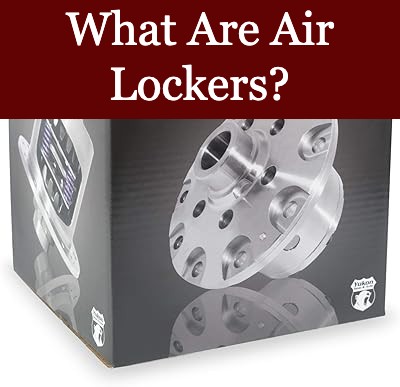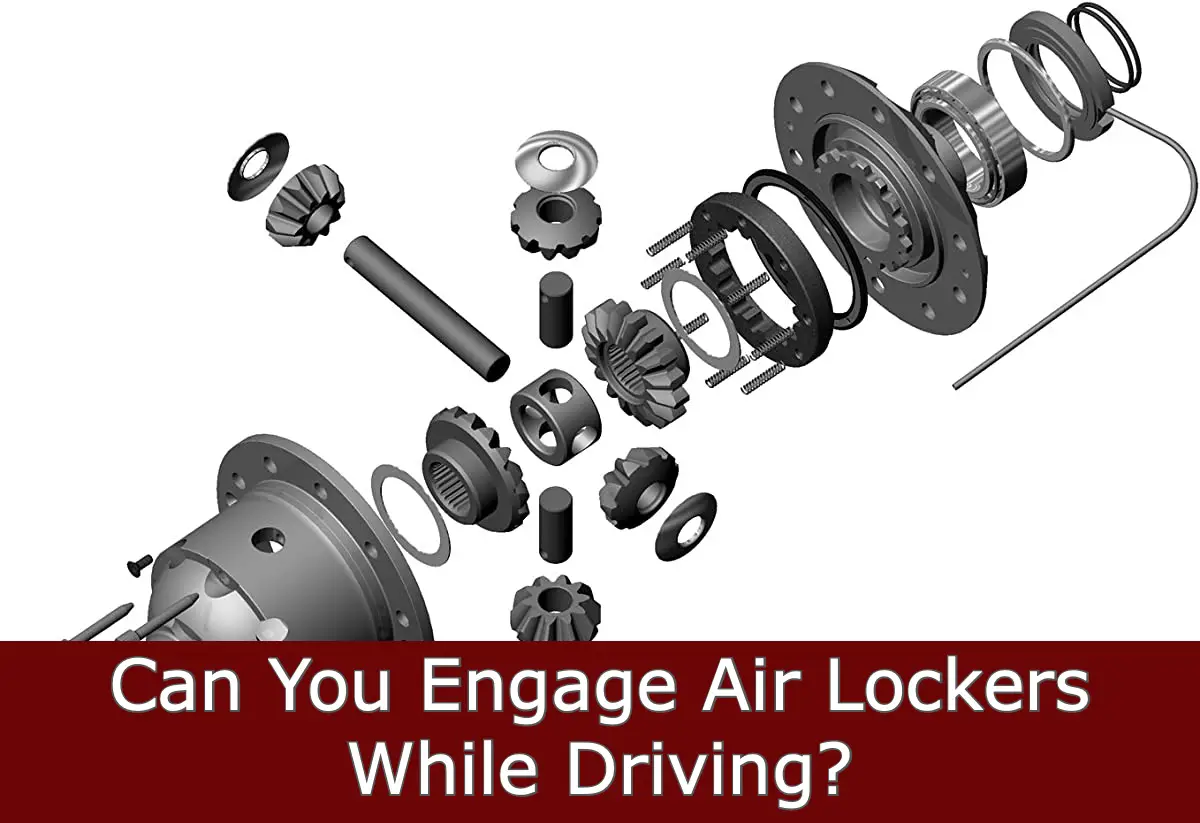If you’re like most people, you probably think of airlocks as places where you put your feet while you wait to board a spacecraft. But some curious drivers have discovered that they can also use airlocks to drive their cars.
Are you curious about whether can you engage in air lockers while driving? For the most part, this question is impossible to answer definitively as it would depend on the make and model of your car.
However, there are some general guidelines that can be followed in order to minimize potential accidents. So, what should you do? Let’s have a closer look.
What Are Air Lockers?

The Air Locker is a differential alternative that can act as either an ordinary differential or lock both axles together. Once this device is engaged, you are able to direct the maximum amount of torque to both truck tires.
Moreover, you can control the function of the locking option as a driver. By locking the tires, it is possible to increase traction on slippery roads. ARB is an industry expert known for producing top-quality air lockers for off-road enthusiasts.
The Air Locker by ARB has the advantage that its locked differential operates by means of a pneumatic mechanism. When the mechanism is activated, the air locker prevents differential gears from rotating and prevents axle shafts from turning independently.
How Do Air Lockers Work?
The functioning of air lockers entails the utilization of compressed air to exert pressure on a seal.
The resulting force is then directed towards the internal clutch gear, which proceeds to engage the internal spider and side gears, ultimately creating a secure lock.
An impressive benefit of air lockers is their ability to impart a 40% increase in the strength of your vehicle, thereby enhancing its structural integrity to a commendable degree.
Can You Engage Air Lockers While Driving?
The answer to your question is not as straightforward as it appears. Every driver will run their Air Lockers in different ways according to the vehicle, tires, driving skill, approach angle, etc. What works for one driver may not work for another.
However, we can provide you with a few general guidelines that will provide you with some further options. You may have already seen that your Air Lockers now have electrical wiring in the rear to keep from accidentally switching them on when the front locker is not utilized.
This is mainly a safety precaution that has been implemented to ease the panic of accidentally switching on your front locker when it’s not required. Keeping the front differential in a locked position affects the way your vehicle steers, which is quite improbable if you haven’t thought this through beforehand.
When You Shouldn’t Engage Air Lockers and Drive Together
Let’s say you head off the tarmac; Air Lockers carry a lot of torque and traction on the highway. You don’t have to worry about getting bogged down on slick roads for technical terrain and 4th-wheel drive. Stay in any gear that works for you, civil engineering via 4th gear, and you’ll do well.
When you reach harder terrains, study the terrain first. If you’re not certain about whether you gained yourself up a hill or through a bog hole, engage the rear differential lock first.
It’s the greatest security blanket you can ever get. If you are still struggling, take your foot off the accelerator for a second and exercise the front differential lock as well. Never engage an Air Locker when you’re accelerating hard and all wheels are spinning.
That time, we refer to this as crash locking, and will undoubtedly have a damaging impact on the Air Locker or other parts of your drivetrain. Attempting to change gears while not having the clutch is similar to this.
When You Should Engage The Air Locker
People have often thought that an Air Locker is only used when you’re off-roading, but they are often helpful when on the asphalt. The primary use we have discovered is when driving a truck on slick gravel roads.
There’s nothing quite as horrendous as driving down a hill on a wet blacktop, and sensing that the tire rotation is driven by only one wheel. This can be prevented by flipping a switch on the ground of an Air Locker.
Engaging your air locker is most crucial when you’re heading downhill. However, people often forget this fact though. You might know that slippery, rocky, steep, or rutted downhills can be the most horrible things if we don’t handle them properly. In these places, the wheels of our vehicles often tend to lose grip.
So, make sure you have locked the rear Air locker while you’re at the top of the hill. You’ll surely be amazed at experiencing the real differences in the descends. As you lock the Air locker, it will force two wheels to rotate at the same speed. As a result, your vehicle will be in an absolutely straight position than usual.
Remember one thing, you can engage the Air locker at any speed, only when your foot is off the accelerator and both wheels are spinning at the same rate.
Frequently Asked Questions
What are the benefits of air lockers?
The major benefit of using an Air Locker is you’ll be able to engage the locker instantly compared to e-lockers. As well as they help you to keep your vehicle straighter when conquering those high slopes.
Are air lockers worth it?
Even though Air lockers tend to be an expensive investment, they’ll be the winner in the long run. The reliability and instant engagement opportunity of Air lockers really worth the money.
How do you use an ARB Air Locker?
At the flick of a switch, you can conveniently engage or disengage the Air Locker differentials. You only need to engage the Air Locker if you need extra traction while climbing a difficult slope. Just take your foot off the accelerator, press the Air Locker button, and stay driving if you don’t slow down.
What do you need air lockers for?
Lockers are useful in preparing yourself to effectively harness the total traction available between your tires and the ground on which you’re driving. Air lockers permit you to optimally use the overall traction your vehicle’s tires come in contact with in order to make efficient use of the available power.
Conclusion
So, can you engage Air lockers while driving? Let’s remind you once again. You can engage the Air locker when two wheels are at equal speed, and you’re not accelerating. From now on, you might be able to justify when you should and shouldn’t engage your Air locker.
